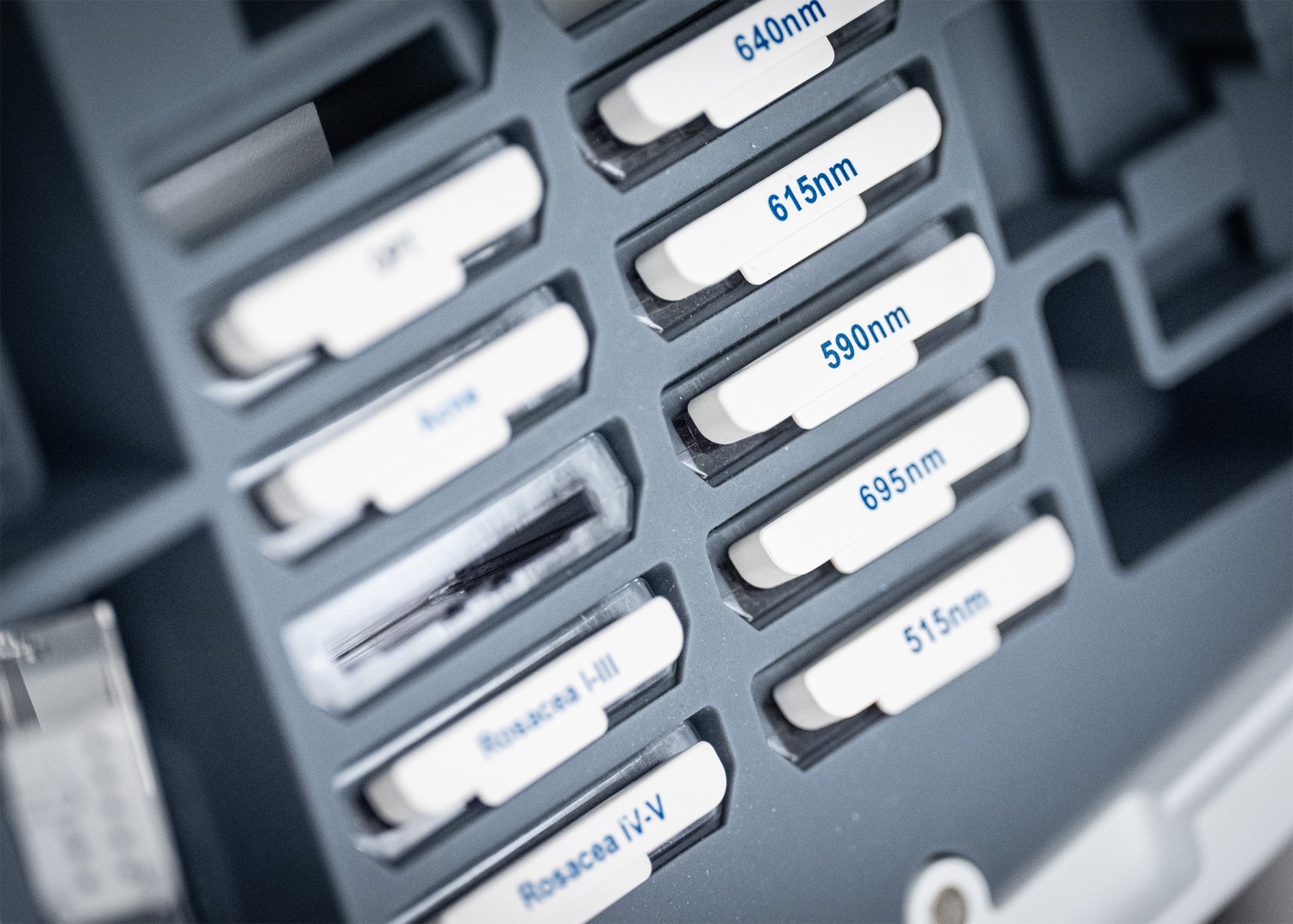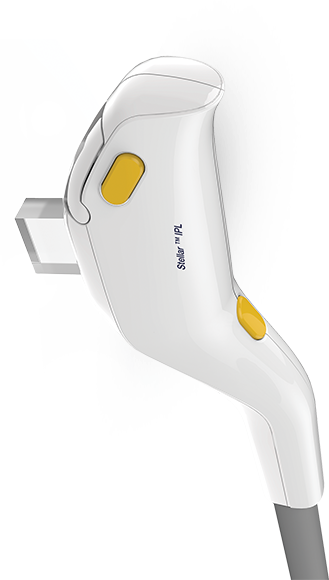Service / Dry Eye Lab
IPL

Are You Struggling with Dry Eyes?
At eye&I , we understand how dry eye syndrome can interfere with your work, focus, and quality of life. That’s why we’re proud to offer OptiLight by Lumenis—the first and only FDA-approved IPL (Intense Pulsed Light) treatment for managing dry eye disease caused by meibomian gland dysfunction (MGD).
What Is Dry Eye Disease?
Dry eye occurs when your eyes don’t produce enough high-quality tears to stay lubricated and healthy. This often results from an imbalance in the tear film, which consists of:
- Oil (lipid) layer – prevents tear evaporation
- Water (aqueous) layer – provides hydration and nutrients
- Mucus layer – helps tears stick to the eye’s surface
When one or more layers don’t function properly—especially due to MGD (meibomian gland dysfunction)—it can cause uncomfortable symptoms like:
- Dryness and grittiness
- Redness or stinging
- Blurry or fluctuating vision
- Excessive tearing or watery eyes
- Burning or sensitivity to light
What Is Meibomian Gland Dysfunction (MGD)?
MGD is the leading cause of dry eye, affecting over 80% of cases. It occurs when the meibomian glands—located along your eyelids—become blocked, preventing them from releasing the healthy oils that stabilize your tears. Without these oils, tears evaporate too quickly, leading to chronic irritation.
Introducing OptiLight by Lumenis – IPL Therapy for Dry Eye
OptiLight IPL is a safe, gentle, and clinically proven solution that treats the root cause of dry eye—chronic inflammation caused by MGD. It uses precise pulses of light around the lower eyelids to improve gland function and reduce inflammatory markers, bacteria, and abnormal blood vessels.
Benefits of OptiLight IPL:
- Increases tear break-up time
- Reduces inflammation and bacterial overgrowth
- Diminishes Demodex mites
- Helps eliminate abnormal blood vessels
How the Treatment Works
- Treatment Time: 10–15 minutes per session
- Recommended Protocol: 4 sessions spaced 2–4 weeks apart
- Add-On: Meibomian gland expression is performed after each treatment to clear blocked glands
- No Downtime: Most patients return to daily activities right away

Is OptiLight by Lumenis Right for Me?
Your optometrist is the only person who can determine which dry eye treatment is best for you and your individual needs. During your next eye exam, ask us if you are a good candidate for OptiLight by Lumenis.
While OptiLight by Lumenis is an effective dry eye management solution, we want to make sure it’s right for you. We do not recommend this treatment if you:
- Are taking certain medications, like Accutane
- Have active acne
- Suffer from certain skin disorders
- Are susceptible to keloid scarring
- Have severe scarring
- Have severely sunburned recently

We're Here to Help
At eye&I™, we’re passionate about providing lasting solutions—not just temporary relief. Our optometrists use advanced diagnostics to identify the true cause of your dry eye and build a comprehensive, personalized treatment plan just for you.
From IPL and TearCare® to Prokera® and BlephEx®, we offer a full suite of dry eye therapies to meet your needs.
Don’t let dry eye control your life. Discover how OptiLight by Lumenis can help you see better, feel better, and live more comfortably every day.
Serving patients in Bayside, Great Neck, and across the NYC area
Call now or book online to schedule your dry eye consultation at eye&I™!
FAQs
-
What is IPL?
IPL, or Intense Pulsed Light, treatment for dry eyes is an innovative and non-invasive therapy designed to alleviate the symptoms of dry eye syndrome and improve overall eye comfort. Dry eye syndrome occurs when your eyes do not produce enough tears or when the quality of tears is compromised, leading to eye discomfort, redness, irritation, and sometimes even blurry vision. IPL treatment specifically targets the underlying cause of dry eye, making it an effective solution for certain individuals.
-
What is OptiLIGHT?
OptiLIGHT is a light-based treatment that uses precise, intense broad spectrum light to address signs of dry eye disease due to meibomian gland dysfunction (MGD). MGD is the most common cause of dry eye disease, accounting for about 86% of cases. The treatment addresses inflammation, which is one of the key underlying factors in MGD. OptiLIGHT was specifically developed to reach the delicate contours of the treated area safely, effectively, and gently using the OPT™ technology. It is intended for use in patients who are at least 22 years old, together with other available treatments, such as Meibomian gland expression, artificial tear lubricants, and warm compresses
-
How does OptiLIGHT work?
OptiLIGHT reduces major sources of inflammation leading to dry eye disease such as abnormal blood vessels, Demodex mites, and pro-inflammatory agents. OptiLIGHT restores the function of meibomian glands and delays evaporation of the tear film.
-
What does treatment with OptiLIGHT involve?
Treatment protocol typically consists of 4 sessions, at 2 to 4 weeks apart:
During treatment, your practitioner will cover your eyes with shields and apply a thin layer of coupling gel on the treatment area.
During treatment, light is applied on the skin below the eyes, most patients report minimal discomfort.
OptiLIGHT is followed by meibomian gland expression.
Each session takes only 10-15 minutes. There is no downtime, you can resume your daily activities immediately. -
When should I expect an improvement?
Patients typically report improvement after 2 to 3 treatments. For optimal results, 4 sessions are advised. To ensure long-term results, a maintenance session is recommended every 6-12 months.
-
What should I expect after treatment?
You may experience some redness immediately following treatment. This will usually disappear within a few hours. You can return to your daily activities and apply makeup straight away in most cases. You will be advised to stay out of direct sunlight for a few days and to apply sunscreen.
-
What are the potential risks and side effects?
Potential risks and side effects of using OptiLIGHT on your skin may include pain/ discomfort, damage to natural skin texture, change of pigmentation, scaring, excessive edema, fragile skin, bruising, burns, pruritus and xerosis. You should consult with your physician about these risks and whether treatment with OptiLIGHT is suitable for you.
-
Does insurance cover the cost?
No, it is a private pay procedure.
-
Who is affected by dry eye?
Dry eye can affect anyone, but it's more common in people who spend a lot of time on screens, wear contact lenses, or live in dry or windy climates.
-
What are the symptoms of dry eye?
Symptoms include dryness, irritation, burning, redness, blurry vision, and a gritty feeling in the eyes.
-
Why is it important to treat dry eye?
Treating dry eye helps you see better and live more by reducing discomfort and improving your overall vision.


